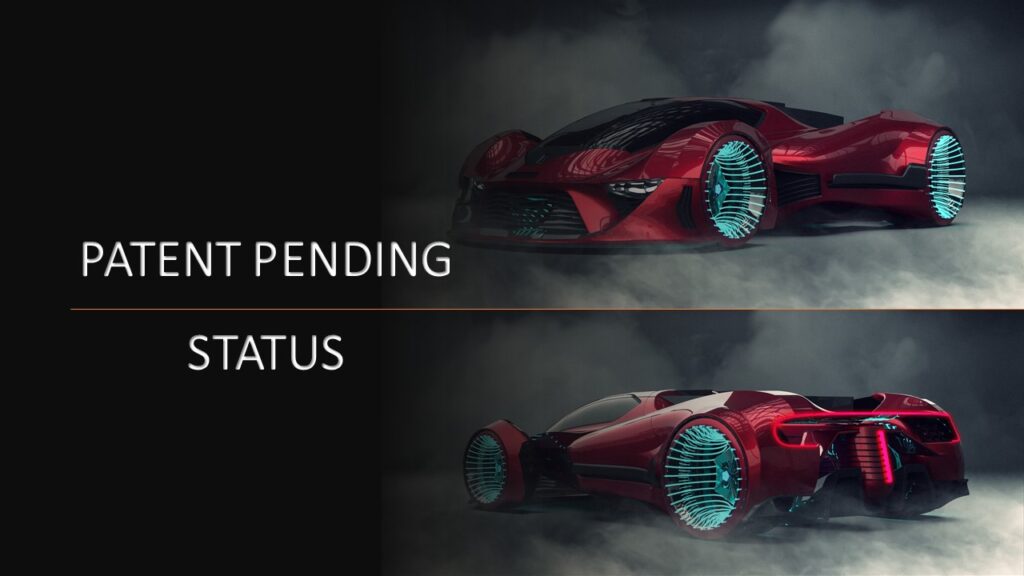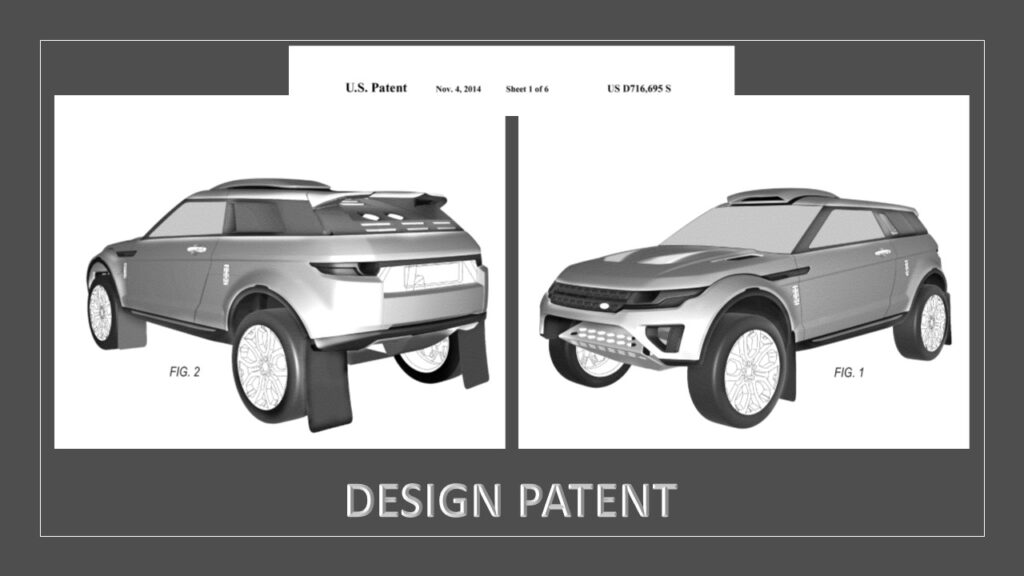Strategic Patents
Table of Contents
ToggleStrategic patents refer to a deliberate approach to acquiring and managing patents that goes beyond merely protecting inventions. These patents are carefully selected, crafted, and managed to align with specific business objectives and market goals. Rather than being passive defensive measures, strategic patents are proactive tools used to gain a competitive advantage, strengthen market position, and generate value for the business.
At Affordable Patent Agency, we specialize in helping businesses leverage their patents strategically to maximize their competitive edge and drive growth. In this blog post, we’ll explore what strategic patents are and how they can be a game-changer for your business.
Is Your Patent Strategic Enough?
Consult with
Affordable Patent Agency, LLC
The Different Types of Strategic Patents
To develop a valuable and strategic patent portfolio, you must know intellectual property law and the different types of patents available to inventors and businesses. Developing a strategic patent portfolio is essential to ensure that your invention(s) are largely protected. You may need to employ one or more types of patent applications to build a valuable patent portfolio. There are essentially three main types of applications: utility, design, and plant. You can use one or more of these patent applications to protect your innovation.
Utility Patent Application
If you create or discover any new and useful machine, process, manufacturing, composition of matter, or material improvement, you may be able to get a patent for it by filing an application for a utility patent.
You can use a utility patent together with design patent applications, e.g., a car may have several utility and design patents. You can patent the process of car manufacture, several vehicular devices, the composition of metal alloy, etc. The design of the car exterior, interior, wheel, etc. are patentable. For maximum innovation protection, you must understand patent application types. I will detail the differences between these patent applications and when to use them.
Provisional Patent Applications (PPAs)
- Design patent applications are never provisional.
- These are less formal patent applications with fewer documents requirements.
- Low in cost.
- Quick filing to establish a priority date with the U.S. Patent and Trademark Office (USPTO).
- No claims are not required.
- No review by an examiner.
- They are valid for 12 months.
- You must convert it into a utility non-provisional patent application within 12 months. Otherwise, the application will become abandoned after 12 months.
- The primary purpose is to establish the earliest priority date. Under the current first-to-file rules, it can enhance your chances of a patent grant.
- It gives you the best chance of grant when competitors may have the same or similar inventions, but you have the earlier priority date.
- One significant advantage is that you can collect more data during the 12 months. You can use this data to draft the nonprovisional application.
- “Patent Pending” status for your product for a limited time of 12 months.

Non-Provisional Application
- This utility application requires a formal application format and document requirements. It must follow a specific layout.
- It requires claims, which establish the boundaries of your intellectual property.
- If issued, it lasts for 20 years from the date of filing.
- They will be published 18 months from the priority filing date.
- Cost more money for both the USPTO and attorney’s fees (the patent attorneys for drafting is generally $7K-$20K). Our costs are lower and affordable.
- Specific sections include the abstract, figures, background, summary, specification, and claims.
Divisional, Continuation, Continuation-In-Part Applications
The inventors can file modified original patent applications, yet they can keep the valuable priority filing date. Modified original patents are Continuation, CIP, and Divisional applications. Due to the first-to-file rule, the ability to claim an earlier priority filing date is hugely advantageous. It is the most beneficial resource available to develop a valuable patent portfolio for inventors. The “parent” patent application is the original or the first filed nonprovisional application.
Divisional Application
- These consist of the unexamined filed initial claims due to the restriction requirements.
- When the Examiner considers that the application contains more than one invention, he issues a restriction requirement. Claims corresponding to the second and subsequent inventions remain unexamined.
- It must contain the same disclosure (specification) without the addition of a new matter.
- It retains the priority date of the parent application.
- You must file this application before either issuance (approval) or abandonment of the parent patent application.
- At least one inventor must be the same in the new divisional and parent patent applications.
Continuation Application
- Continuation applications have the same disclosure as the parent patent application.
- The scope of the claims must not be identical to the parent patent, i.e., they can be broader or narrower compared to the parent patent.
- You can pursue canceled claims from the parent patent or file new claims.
- It will be best to consider the Examiner’s arguments and recited prior art references in the parent application when you draft the claims.
- You can file one or more continuation applications.
- At least one inventor must be the same in the new divisional and parent patent applications.
- You must file this application before either issuance (approval) or abandonment of the parent patent application.

Continuation-in-part (CIP) Patent Application
- Any improvements made in the invention filed in the parent patent application is filed as CIP.
- CIP can contain parts of the parent and new disclosure that was not present in the parent application.
- Claims based on the new disclosure will have priority of the CIP filing date.
- Claims based solely on the parent application disclosure will get the priority date of the parent application.
- At least one inventor must be the same in the new divisional and parent patent applications.
- There are no rules about how much of the original parent patent application disclosure is present in the new CIP application. But there must be a clear link between the two applications to keep them within the same family.
- You must file this application before either issuance (approval) or abandonment of the parent patent application.
Design Patent Application
- A US design patent protects a unique visual aspect of a manufactured functional article.
- The manufactured article must have a utility, but the patent does not protect the utility. You will need to file a utility patent to protect the functional and other aspects of the article.
- Like a utility patent, the novel and obviousness requirements must satisfy.
- Line drawings depict the ornamental design, and solely the solid lines depict the protected parts.
- The ornamental design must be visible when the article is in use.
- Plant Patent Application
- Developing a patent for a plant involves specific criteria and considerations that distinguish it from other types of patents. Here are the key requirements for filing a plant patent application:
- Invention or Discovery in a Cultivated State:
The plant that is subject to the patent application must have been either invented or discovered in a cultivated state. This means that the plant must have been deliberately developed or found under human care or intervention, rather than occurring naturally in the wild.
- Asexual Reproduction:
The plant must be capable of asexual reproduction, meaning it can reproduce without the need for seeds. However, it’s important to note that the part of the plant used for asexual reproduction should not be a tuber food part. This requirement ensures that the patent covers the method of reproduction and propagation of the plant.
- Inventorship:
The individual applying for the plant patent must be the person who invented the claimed plant. This typically involves discovering or developing the plant, identifying or isolating its unique characteristics, and asexually reproducing it. The inventor must demonstrate a direct contribution to the creation of the new plant variety.

- Novelty and Distinguishing Characteristics:
The plant needs to be innovative, which means it needs to have at least one unique feature that sets it apart from other well-known, related species. This trait ought to be more than a result of variations in growth environments or levels of fertility. It must have a special characteristic that makes the plant stand out from other varieties and adds to its uniqueness.
- Nonobviousness
Similar to other inventions, the new plant variety must meet the requirement of nonobviousness. This means that the plant’s characteristics and its method of development should not be obvious to a person skilled in the relevant field at the time of the invention. The plant should involve an inventive step beyond what is already known or expected in the industry.
In summary, filing a plant patent application involves ensuring that the plant meets specific criteria related to its development, reproduction, uniqueness, and nonobviousness. By satisfying these requirements, inventors can secure legal protection for their novel plant varieties and prevent others from exploiting their innovations without authorization.
Frequently Asked Questions
What Is the Difference Between a Regular Patent and a Strategic Patent?
The difference between a regular patent and a strategic patent is that a regular patent, also known as a utility patent, provides legal protection for a specific invention or innovation, granting the patent holder exclusive rights to use, make, and sell the invention for a limited period. On the other hand, a strategic patent is selected, crafted, and managed with a broader business strategy in mind. Strategic patents are strategically aligned with the company’s goals and market objectives, serving as proactive tools to gain a competitive advantage, strengthen market position, and generate value beyond mere protection.
How Can Strategic Patents Benefit My Business?
Strategic patents can benefit your business in the following ways including:
- Competitive Advantage: Strategic patents can differentiate your products or services in the market, making it difficult for competitors to replicate your innovations and giving you a competitive edge.
- Revenue Generation: Strategic patents can be monetized through licensing agreements, partnerships, or outright sales, creating additional streams of income for your business.
- Risk Mitigation: By strategically patenting key technologies, you can deter competitors from infringing on your intellectual property and mitigate the risk of costly infringement lawsuits.
- Enhanced Valuation: A strong patent portfolio enhances the value of your business, making it more attractive to investors, partners, and potential acquirers.
How Do I Know if My Patents Are Strategic?
Knowing if your patents are strategic requires careful consideration of several factors, including:
1.Alignment with Business Goals: Evaluate whether your patents are closely aligned with your business objectives, such as expanding into new markets, protecting core technologies, or generating revenue through licensing.
- Market Analysis: Assess whether your patents address key market opportunities and provide a competitive advantage in the industry.
- Technology Landscape: Consider whether your patents cover innovations that are essential to your business’s success and provide barriers to entry for competitors.
- Portfolio Management: Continuously evaluate and manage your patent portfolio to ensure that it remains aligned with your business strategy and optimized for maximum value.
By analyzing these factors, you can determine whether your patents are strategic and make informed decisions about how to further develop and leverage your intellectual property assets.
Develop Your Strategic Patent with
Affordable Patent Agency
In today’s competitive business environment, strategic patents are more critical than ever for driving innovation, protecting intellectual property, and gaining a competitive edge. By partnering with Affordable Patent Agency, you can unlock the full potential of your patents and position your business for long-term success.
Ready to take your IP strategy to the next level? Contact us today to learn more about how we can help you harness the power of strategic patents for your business.
Affordable Patent Agency, LLC
4131 N. Central Expressway Suite 900, Dallas, TX 75204
(855) 444-1946




